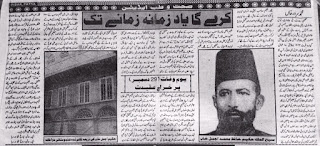Use of innovative IEC
for healthcare communication
in Rural Bihar
By
Dr. Md. Sarwar Khan
Background
Through the initial days of the Bihar Technical Support Program funded by Bill & Melinda Gates Foundation (BMGF) under a MoU with Govt. of Bihar, the facility level study showed that there is immense need for the presence of effective communication tools at the health facilities.
It was identified that strategic communication tools were to be designed based on the regional culture and knowledge. Since the initial days of the program it was observed that IEC has not evolved from a piece of leaflet or a poster in Bihar. Even at the facility level simple instructions were not communicative enough for the communities. The instruction manuals/booklets/posters were still traditional and mere text documents as shown below:
On assessing the effectiveness of such posters, it was found that most of the target groups do not know how to read. Without any visual aid the text heavy communication tools failed to communicate to its target group which primarily was the beneficiaries.
Even for a literate beneficiary the medical language and terms used in the facility level communication tools were difficult to understand. These messages/posters used to be standardized across the state and were loaded with too much of information.
Keeping the above mentioned deficiencies in mind, short positives messages where developed so that the beneficiaries and facility staff are able to understand and remember them to bring them into practice.
Through further pre-testing – when the messages were tested among the community to assess the effectiveness of such messages, it was observed that these were neither eye catching nor attractive for anyone to even look at them.
Many beneficiaries who were literate also could not understand the language, which was Hindi as Hindi is not a well-used language at many parts of Bihar. To cater to these issues, the program had to innovate a new series of strategic IEC.
The program initiated more studies to look deeper in the local dialects and the cultural practices.
Solution
As WHO defines IEC - an approach which attempts to change or reinforce a set of behaviours in a “target audience” regarding a specific problem in a predefined period of time. When carefully carried out, health communication strategies help to foster positive health practices individually and institutionally, and can contribute to sustainable change toward healthy behaviour.
To solve the problem in hand local language (dialect) was chosen for communication, various posters were designed.
This time the communication tools came out as the result of the process…. They were unique. Because these posters had messages which were affirmative and not negative
For example, in place of “keep the hospital clean” the posters said “the hospital is clean”. Like the one shown here in Graphic – ii.
Finally as a visual aid solution the pictorial representation of the same was also included local art forms. This made the poster more attractive and easy to understand and above everything – a fine communication tool.
Implementation
In the year 2011, 12 sets of Local IEC material (basically slogans) were developed for Saharasa district. These slogans were based on a few critical behavior change aspects of health care providers and beneficiaries. They were displayed in simple black and white print format without having any diagram or pictures. Later, it was replicated in other core districts also. As per the observations made, these local IEC materials had good impact over its audience.
To move a step forward, these IECs were developed using the Madhubani painting and languages like Maithili and Hindi as the medium of communication. Madhubani painting is one of the famous art form of Bihar. Maithili is the local dialect of 9 districts of the state.
Impact
After a successful pre-test we have piloted this Innovative IEC with area specific languages in four districts. And we found that the use of these communication tools have led to an increased awareness amongst the beneficiaries and facility staff. Because of these localized messages, beneficiaries are becoming aware about some of the best practices and protocols and
have started questioning the service being provided at the health facilities. This can be considered as one of the starting points of demand driven quality improvement of the health services. Apart from that, these communication tools have also motivated the facility staff to follow the best practices and protocols. Before the intervention, it was observed that some of the facility staff were either not aware about the protocol or had forgotten it over the period of time. These localized messages increase the visibility and retention of such health messages and protocols.
Challenges
Even after a visible success of the IEC innovation we could further identify some challenges while implementing them in Bihar. The main challenges can be listed as:
- Area specific art forms are rare. Not that all of the regions have their local art form which can be used in information dissemination or any other sort of communication.
- Even in Bihar there are nine different dialects and conversion of information and developing affirmative messages in all dialects to cover all thirty eight districts of Bihar is surely a challenge.















































